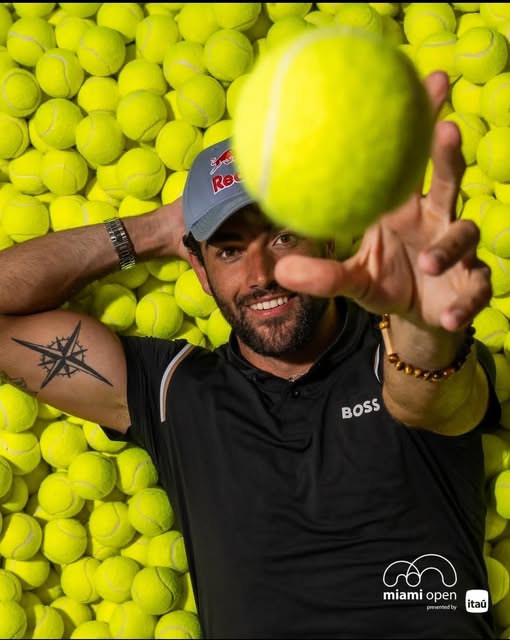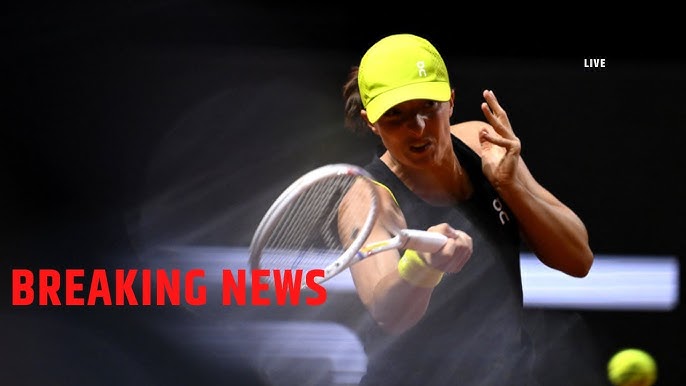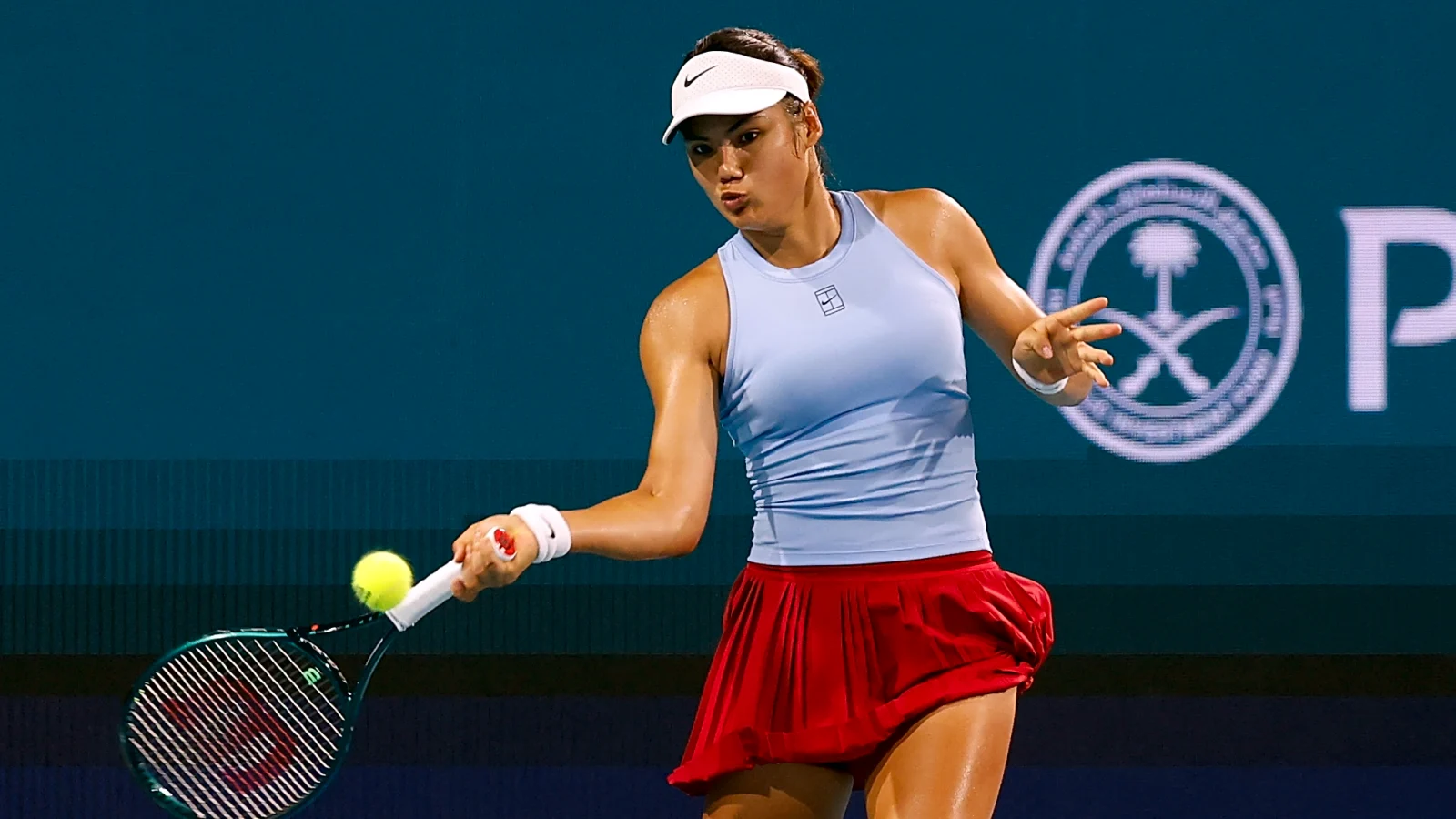Introduction:

The 2025 clay court season was supposed to be Matteo Berrettini’s big return. After months of dealing with injuries and inconsistency, the Italian star entered the Monte Carlo Masters with high hopes—and his early performances only fueled the optimism. Yet, just as Berrettini fans began to believe in a full-fledged comeback, the narrative took a sharp turn. A sudden and significant setback in Monte Carlo has now cast doubt over his fitness, confidence, and momentum leading into the crucial stretch of the ATP Tour.
What happened to Berrettini in Monte Carlo? Why is this setback significant? And what does it mean for his Roland Garros prospects? In this deep-dive blog post, we’ll dissect the timeline, implications, statistics, and future outlook for Matteo Berrettini—one of Italy’s most charismatic and powerful tennis figures.
1. The Promising Start: Monte Carlo Opener Sparks Hopes
Coming into the Monte Carlo Masters, Matteo Berrettini had momentum on his side. He had recently completed back-to-back wins on clay, showcasing sharp footwork, punishing forehands, and, most importantly, a clean bill of health.
In the first round of Monte Carlo, Berrettini delivered a commanding performance against Miomir Kecmanović. He served with over 80% first serve accuracy, landed 27 winners, and kept unforced errors below 15—a sign that his game was peaking at the right time.
Clay has historically been a surface of moderate success for Berrettini. While his most dominant displays have come on grass (including his Wimbledon final appearance in 2021), he’s no stranger to clay, especially with his semi-final run at the 2021 Madrid Open and multiple top-20 wins.
Key Stats from Round 1 in Monte Carlo:
- First serve win percentage: 84%
- Break points saved: 5/6
- Winner-to-unforced error ratio: +12
- Average rally length: 6.3 shots (favorable for his baseline aggression)
2. The Setback: A Crushing Blow Against Francisco Cerúndolo
But all optimism came crashing down in the second round when Berrettini faced Argentina’s Francisco Cerúndolo—a tenacious baseliner with a gritty clay-court game. The match started evenly, but midway through the first set, Berrettini began showing signs of discomfort.
Medical timeouts followed. His movement became labored. His serve lost speed, and the power off his forehand was inconsistent.
Cerúndolo eventually prevailed 6-4, 6-3, but the bigger story wasn’t the result—it was Berrettini’s condition.
Reported Issues:
- Lower back tightness aggravated during service motion
- Physiotherapy on court didn’t resolve stiffness
- Post-match, Berrettini admitted he had felt a “strain that didn’t feel good at all” starting early in the second set
3. FAQs About Berrettini’s Monte Carlo Setback
Q: What exactly happened to Matteo Berrettini in Monte Carlo?
A: He suffered a physical setback—likely a lower back or muscular strain—that hindered his performance mid-match against Francisco Cerúndolo. While the extent of the injury is still under evaluation, Berrettini’s discomfort was visible and confirmed in post-match interviews.
Q: Has Berrettini struggled with injuries before?
A: Yes. Since 2022, Berrettini has dealt with multiple setbacks, including abdominal tears, wrist issues, and foot injuries. These have disrupted his ATP Tour rhythm and affected his rankings.
Q: Is this the end of his 2025 clay season?
A: Not necessarily. Team Berrettini has not confirmed a withdrawal from future clay events like Madrid or Rome. However, his status is “day-to-day,” and skipping events to prepare for Roland Garros is on the table.
Q: How important is the clay season for Berrettini?
A: Crucial. Not only does it offer ranking points, but it’s also a chance to prove fitness and compete in front of home fans in Rome. Moreover, clay court consistency is critical for momentum heading into the Grand Slams.
Q: What’s his ranking situation now?
A: As of the end of Monte Carlo 2025, Berrettini sits just inside the ATP Top 40, with significant points to defend later this year. A withdrawal from key tournaments could jeopardize his seeding at Roland Garros.
4. Strategic Implications: What’s Next for Team Berrettini?
Berrettini’s team is now faced with difficult decisions. Risk further injury by pushing for short-term results or recalibrate for a more meaningful long-term return?
Here are four possible strategies his camp might employ:
1. Withdraw from Madrid and prioritize Rome
This would allow Berrettini to heal and return in front of the Italian crowd, where he’ll have home-court advantage and extra motivation.
2. Shorten practice sessions and focus on rehab
Rather than pushing for form on the practice court, the focus could shift to strength-building and recovery exercises tailored for the back and core.
3. Consider a protected ranking
If the injury lingers, Berrettini may explore the use of a protected ranking to enter major tournaments, especially if he slips outside the Top 50.
4. Revisit coaching and scheduling
Too many comebacks followed by injuries suggest deeper issues. It may be time for Berrettini’s team to re-evaluate his physical training, match scheduling, and off-court conditioning.
5. Why This Setback Hurts More Than Ever
Berrettini’s 2025 clay season had the makings of a redemption arc. The tennis world loves a comeback, and Berrettini—charismatic, powerful, and engaging—had all the makings of a star revival story.
This setback hurts more because:
- Momentum was building. Fans and analysts alike noted his improved body language and power baseline game.
- Italy had high hopes. With Jannik Sinner and Lorenzo Musetti also pushing deep into the clay season, a healthy Berrettini could have formed a national trident of success.
- Time is ticking. At 29, Berrettini is entering the phase of his career where injuries don’t just sideline you—they redefine your career arc.
6. What This Means for Roland Garros and Beyond
The French Open is just weeks away. Berrettini, despite limited clay success in Paris, has historically played well when healthy. If he skips Madrid and manages to recover in time for Rome, he could enter Roland Garros with at least some momentum.
But if the injury worsens or lingers, his seeding and physical preparation will take a hit—setting him up for early-round danger against top players.
Additionally, his post-Roland Garros schedule includes grass court events—arguably his best surface. Wimbledon 2025 looms large for Berrettini, where he’ll aim to defend quarterfinal points and recapture past form.
7. The Bigger Picture: The Fragility of Modern Tennis Comebacks
Berrettini’s Monte Carlo story is a textbook case of how difficult it is to balance high-level tennis with injury-prone bodies. With the modern game requiring explosive power and baseline endurance, players like Berrettini—who rely heavily on serve and forehand mechanics—are at constant risk when their bodies aren’t 100%.
This is a cautionary tale for fans, coaches, and fellow players: A single physical setback can alter the trajectory of an entire season.
Conclusion: A Critical Crossroads for Matteo Berrettini
Matteo Berrettini’s brief rise and abrupt fall in Monte Carlo is more than a storyline—it’s a turning point. As he faces another uncertain recovery path, the Italian star must weigh caution against ambition, healing against hustle. The 2025 clay court season isn’t over yet, but the clock is ticking.


